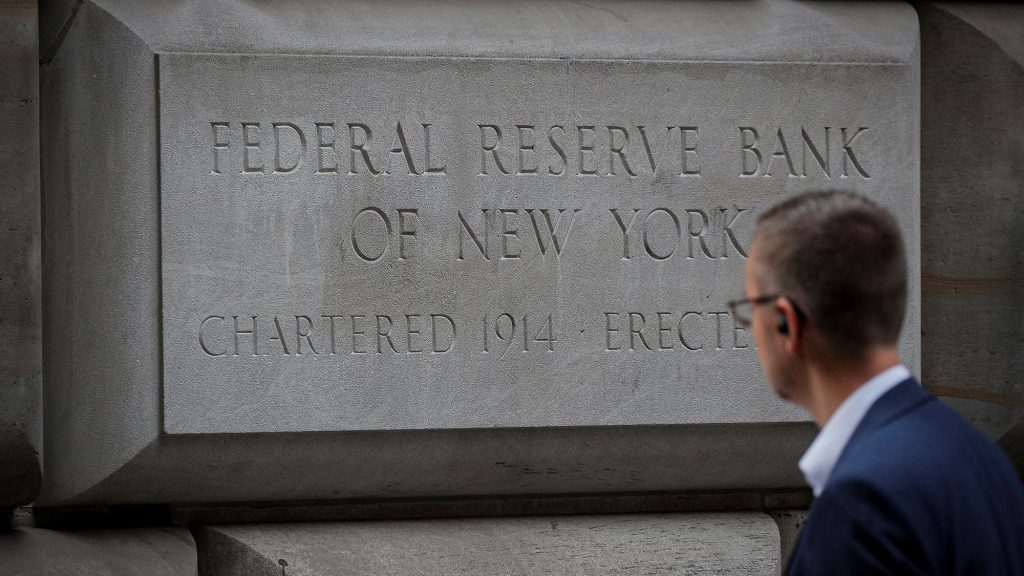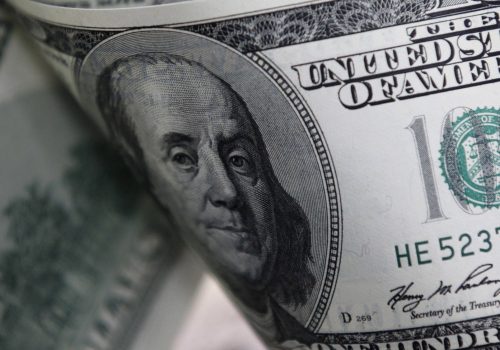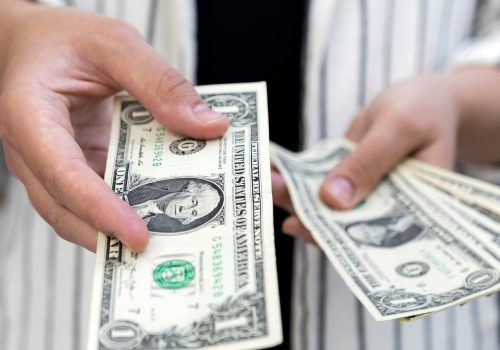While the world was busy watching the collapse of crypto exchange FTX, the US Federal Reserve system made an important move. Speaking at the Singapore FinTech Festival on November 4, a senior official from the New York Federal Reserve surprised many in the audience by announcing that for the past several months, the New York Fed has been developing a “wholesale” central bank digital currency (CBDC) designed to speed up transfers between banks around the world.
For those who thought the United States was behind in the digital-currency “space race,” the news was welcome. In a subsequent white paper on the project—named Project Cedar—the New York Fed explained that it has already completed stage one of testing and proved that international currency transactions could be done both quickly and safely through the blockchain. But buried in the technical details was a revealing line on the ambitions of the project: The goal of the new network is “to reduce settlement risk in cross-border, cross-currency transactions.” The message? We see what the world is doing on CBDCs, and the United States is not going to be left behind.
According to new Atlantic Council research, the United States, thanks to Project Cedar, has moved into development of a central bank digital currency and joined its colleagues at the European Central Bank, the Bank of Japan, and the Bank of England in making the leap forward. All of these jurisdictions have different projects (some, such as the United States, are focused on wholesale, while others, such as the eurozone, are hard at work on a “retail” digital currency that could be used to buy an espresso). Many of these central banks, including the Fed, have not actually decided to issue a CBDC—for that, most of the central banks will need legislative approval. And there are major privacy and cybersecurity challenges to address before most Americans open up their phones and use the digital dollar.
Check out the CBDC Tracker
But over a span of two years, the world’s leading central banks have gone from skeptical to serious about a government form of digital currency. When the Atlantic Council’s GeoEconomics Center began this project in 2020, thirty-five central banks were exploring a CBDC; as of today, that number is 114. The motivations vary in each economy, but there are some common themes. The first is the pandemic, or more specifically, the lessons learned from it. At the height of COVID-19, many countries—including the United States—discovered how antiquated their financial plumbing was. The distribution of stimulus checks that could have taken hours sometimes took weeks. As the global economy likely heads into a recession in 2023, the need to improve delivery of money to citizens is paramount for policymakers.
The second is crypto. The FTX debacle is just the latest and largest in a string of prominent crypto failures. Finance ministries and legislatures around the world are trying to figure out rules that can help rein in the worst actors in the field. But while the regulators get to work, central bankers don’t want to sit on the sidelines. Cryptocurrencies and stablecoins are being used all over the world. In India, for example, nearly 10 percent of the population now owns or is planning to invest in cryptocurrency. In the United States, it’s closer to 13 percent. Central bankers are concerned about losing monetary sovereignty and becoming blind to what is happening inside their own economies. They see a central bank digital currency as a way to evolve and compete in this changing landscape.
The final motivation is geopolitical: Russia’s invasion of Ukraine. In the ten months since Russia’s invasion, the GeoEconomics Center’s research has shown that interest in wholesale central bank digital currency has nearly doubled. A range of countries including China, India, Indonesia, South Korea, and Brazil are pursuing this new technology. So what does a land war in Europe have to do with the future of finance?
When the United States and Group of Seven (G7) responded to Russian President Vladimir Putin’s invasion, they did so not with direct military engagement but with the most sweeping set of financial sanctions ever levied against a major economy. The West froze Russian reserves, cut Russian banks off the SWIFT payment messaging system, and slapped over 6,500 individuals with sanctions—and the rest of the world took notice. In conversations we have had with central bankers, it was clear that financial sanctions made several countries think differently about the dollar. Suddenly, the possibility that any country on the G7’s bad side could be cut off from the ability to transfer funds between banks became very real. The logical move, for many countries, was to develop a back-up plan. That’s where central bank digital currencies come in.
The dollar is involved in approximately 88 percent of all foreign exchange transactions. That dominance comes in part from the fact that the dollar is a stable liquid asset in demand by nearly every central bank and financial institution. But only 60 percent of official cross-border contracts are actually denominated in dollars. That’s because even when countries aren’t settling in dollars, they still use it as a trusted intermediary between other currencies. Sometimes international transactions can take days to finalize, so having the dollar as the agreed-upon conversion helps both parties manage risks and reduce costs. Technologies such as CBDCs that allow countries and their commercial banks to settle currency across borders almost instantly are changing the nature of cross-border flows of money. Last month, Hong Kong, China, Thailand, and the United Arab Emirates showed what settlements may look like in the future when they completed twenty-two million dollars in cross-border transactions on the blockchain in the first successful test of its kind.
Suddenly the United States could see the future arriving faster than it previously anticipated. If countries could settle currencies between themselves without touching the dollar, they could significantly soften the bite of sanctions. While debates about crypto legislation and central bank digital currencies have been playing out on Capitol Hill for years, up until now little concrete action has been taken. The speed of finance is faster than the legislative imagination of Congress. With Project Cedar, the New York Fed is showing what is possible when the world’s largest financial market uses state-of-the-art technology to try to improve financial flows across the world.
The announcement, of course, was just the first step. More testing will be done over the next six months, and it will likely be a year before any real money is settled on a US central bank digital currency network. But the signal from the New York Fed was clear: If you are a country considering developing a CBDC, you have a new model to pay attention to. The United States has entered the chat.
Josh Lipsky is the senior director of the Atlantic Council GeoEconomics Center.
Ananya Kumar is the associate director for digital currency at the Atlantic Council GeoEconomics Center.
Further reading
Wed, Sep 28, 2022
Privacy in cross-border digital currency: A transatlantic approach
Issue Brief By
As a growing number of countries explore Central Bank Digital Currencies (CBDCs) for the domestic context, multi-country cross-border CBDCs pilots are also proliferating. Cross-border CBDCs could make cross-border payments faster, cheaper, and simpler.
Thu, Sep 22, 2022
The dollar has some would-be rivals. Meet the challengers.
New Atlanticist By Ananya Kumar, Josh Lipsky
What are the realistic alternatives to the dollar that US and allied policymakers should be paying attention to? And how can they respond?
Fri, Sep 16, 2022
How long before there’s a digital dollar?
New Atlanticist By
Experts from our GeoEconomics Center break down the new Treasury Department recommendations on digital assets.
Image: A man walks outside The Federal Reserve Bank of New York in New York City, U.S., on October 12, 2021. Photo via REUTERS/Brendan McDermid.




